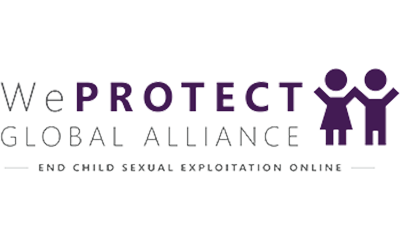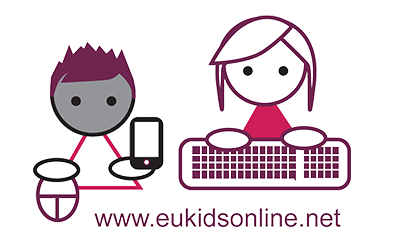The internet is a fundamental tool for accessing information, learning, communication, entertainment, social participation, and creativity. It is, therefore, linked to the socialisation and individuation processes of new generations and – similarly to other contexts in which children and young people grow up – it affords both opportunities and risks. The team in Costa Rica aims to use the Global Kids Online survey to make periodic measurements and diagnostics of different types of internet use, considering its benefits, opportunities, limitations and risks for children. The study involves a survey of children aged between 9 and 17 years and one of their caregivers.
Method
The study used a nationally representative survey involving visits to households where both the children and their caregivers were interviewed. The survey was designed by the National Institute of Statistics and Census of Costa Rica.
Sample: 1008 boys and girls aged between 9 and 17 years (47.4% aged 9-12 years); 50.6% female, 49.4% male; 69.8% urban area; 30.2% rural area.
Sampling: Proportional, stratified, multistage random sampling. Maximum error: 3%, confidence level: 95%.
Findings
- Mobile phones are the main source of internet access and use – 83.3% of children in Costa Rica go online via a mobile phone. This must be seen as a fundamental factor in the development of public policies which are oriented towards the promotion of online opportunities and safety and the integration of internet use in school activities.
- Age: younger children have more limited access than their older peers: about two-thirds of 9 to 12-year-old children use the internet (63%), compared to 90.6% of those aged 13 to 17 years.
Access: there are substantial gaps in internet access based on socio-economic background and geographical area. Rural areas and low socioeconomic status (SES) are associated with restricted internet use – 88.3% of children in urban areas have internet access compared to 80.5% in rural areas. The gaps are even bigger based on SES: 86.1% of children from high SES go online compared to 66% from low SES). - Opportunities: there are similar gaps related to online opportunities. Entertainment, communication, learning, and information-seeking are the main activities in which children engage online, but there is great socio-contextual variability. Children from urban areas use the internet more frequently for entertainment (70.6%) and learning (25.2%), compared with children from rural zones (59,9% and 18.5%, respectively). Girls use the internet for communication more often (33.5%) than boys (26.3%).
Education: internet use for learning activities at school is lower overall but limited even more in rural areas (on a scale of 0 to 10, urban areas M= 2.5, SD=2.1; rural areas M= 2.1, SD=1.9). The introduction of the internet for learning purposes at school and particularly the educational use of mobile phones in class can improve digital skills. On a scale of 0-10, the study yielded a score of 6.5 (SD=1.8) in digital skills when mobile phones are used in class compared to 5.3 (SD=1.9) when they are not. - Digital skills: while it is necessary to promote digital skills for all children, there is a high variability of digital skills by age and geographical area. On a scale from 0 to 10, children aged between 9-12 years report lower digital skills (M=5, SD=1.9) than the 13-17-year-old group (M=7, SD=1.6). Likewise, children from urban areas have higher digital skills (M=6.3, SD=2) than those from rural zones (M=5.8, SD=1.9).
- Parental mediation decreases as children grow older. The 9-12-year-old group report higher parental mediation (86.36%) than the 13-17-year-old group (63.5%). Active mediation (where parents encourage their children to engage with the internet and help them), and restrictive mediation (where parents limit children’s access to devices or the internet) are reported equally often (by 58.2% and 57.5% of children, respectively). Active mediation is positively asociated with opportunities (r= .21, p= < .01) and digital skills (r= .15, p= < .01). Restrictive mediation is associated with lower-risk behavior and threats (r= -.14, p= < .01), but also with fewer opportunities (r= -.24, p= < .001) and digital skills (r= -.25, p= < .01).
- Discrimination online: at least one in five children has witnessed online discrimination but older children are exposed to it more. Nearly half of the 13 to 17-year-olds have witnessed online discrimination (49.5%) compared to 20.3% of the 9-12 year group. Fewer children report actually experiencing discrimination online but the younger groups do this more often (5.9%) than the older children (3.4%). Online discrimination on the basis of age is the most common among the 13-17-year-old group (25%), followed by discrimination based on ethnicity (12.5%), poverty (12.5%), sexual orientation (6.3%), and disability (6.3%). The 9-12-year-old group reports ethnicity (32.8%), appearance (17.8%), poverty (16.4%) and disability (16.4%) as the factors associated most often to discrimination online.
Download Findings report (in Spanish)
The research team
The research has been carried out by the Institute for Psychological Research of the University of Costa Rica (IIP-UCR) and the Paniamor Foundation.
Coordinators: Prof. Dr. Rolando Pérez-Sánchez (IIP-UCR) and MSc. Milena Grillo (Paniamor Fundation).
Post author: Rolando Pérez-Sánchez








